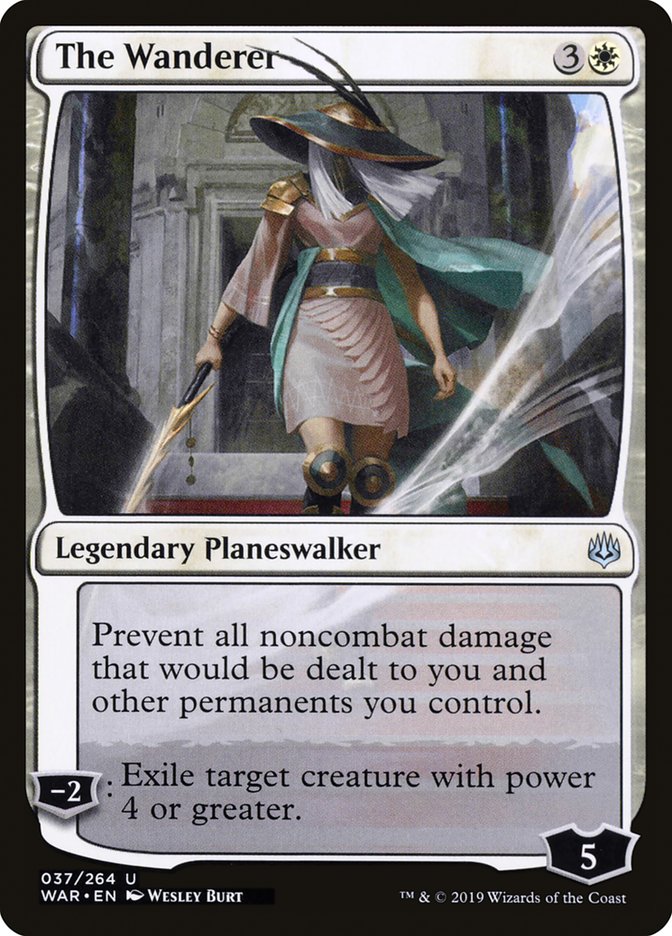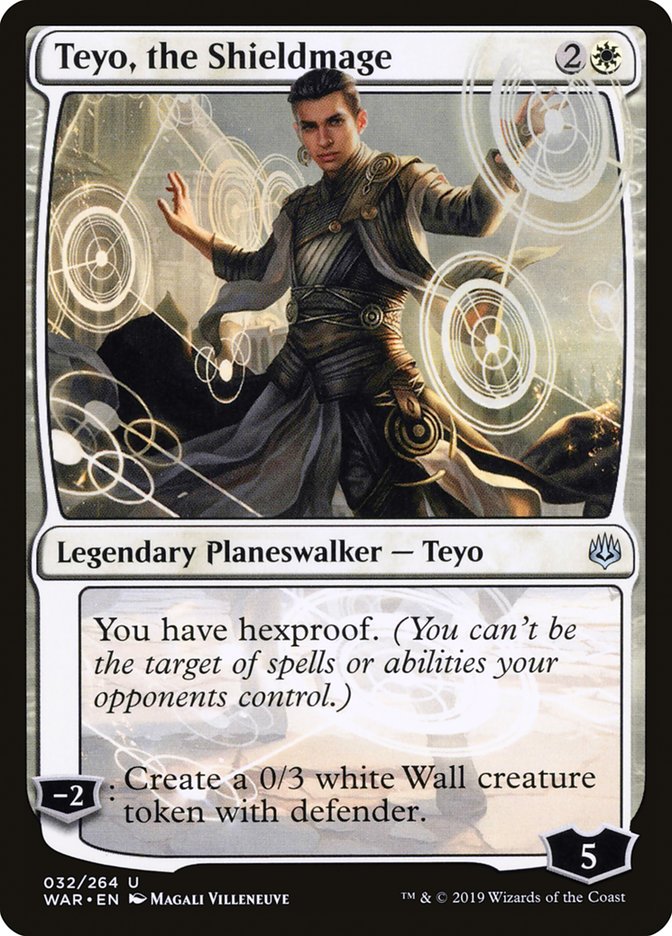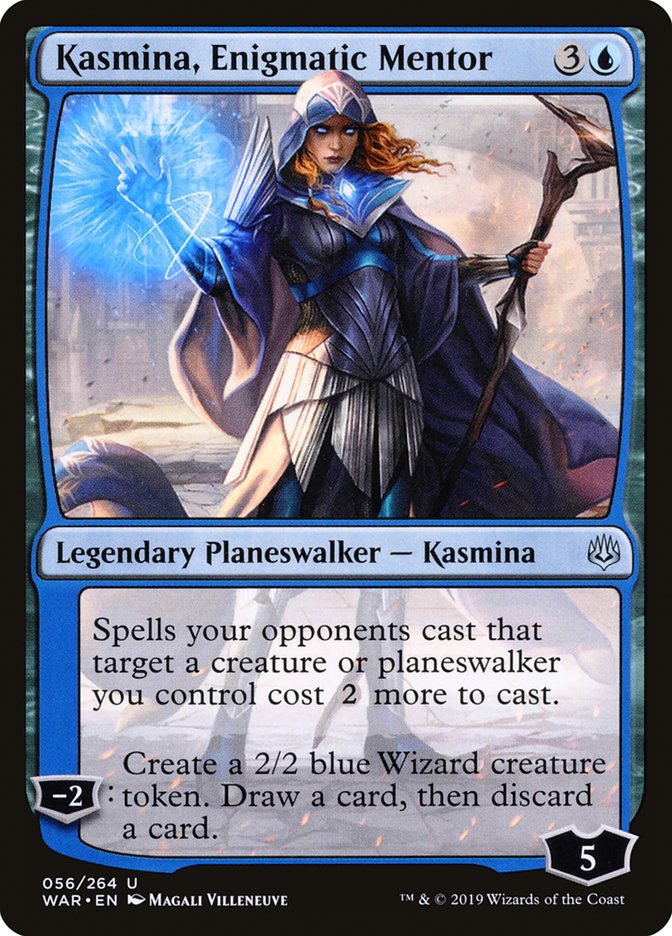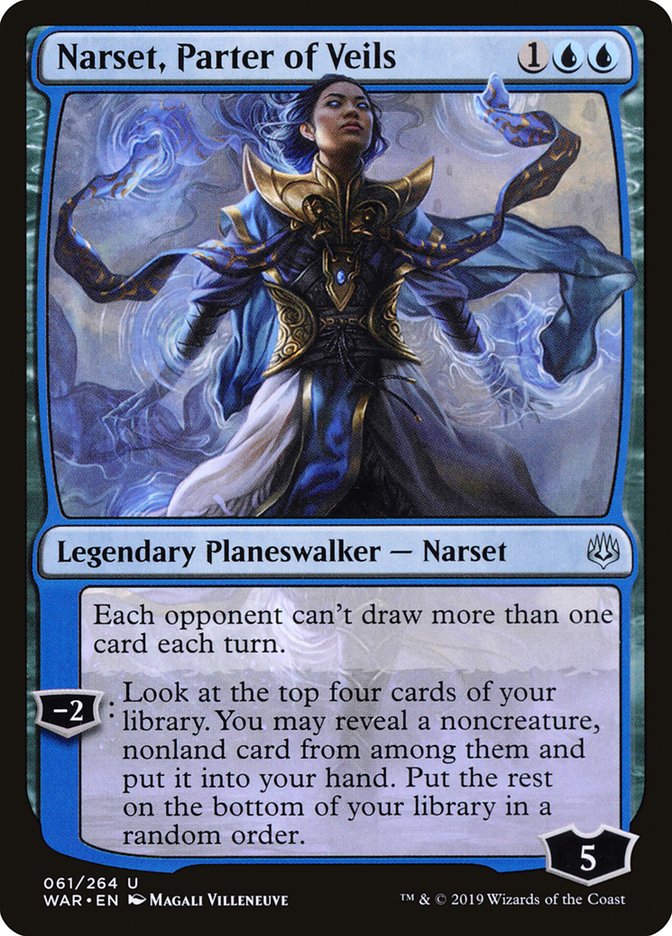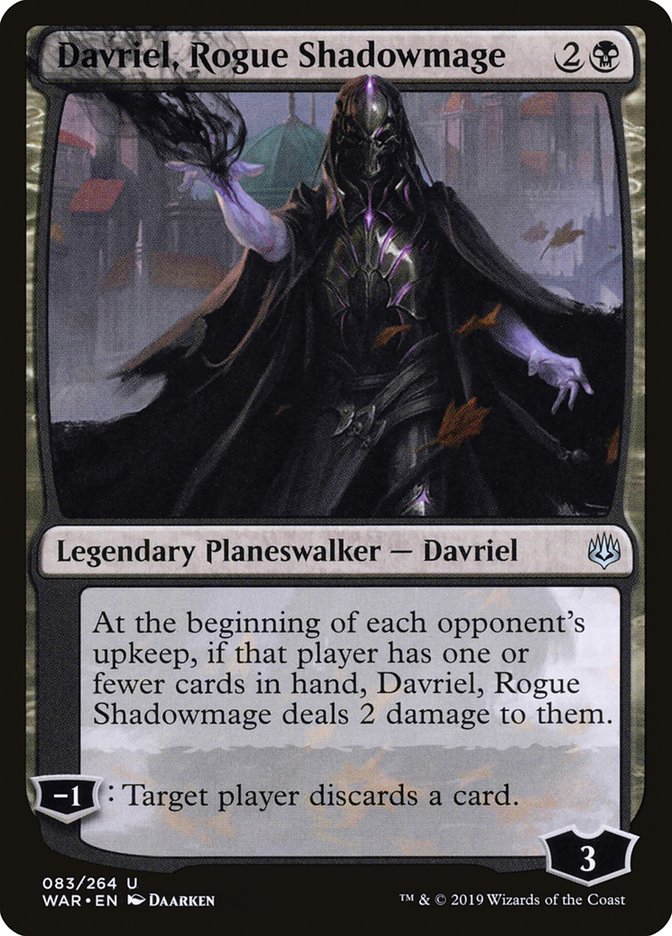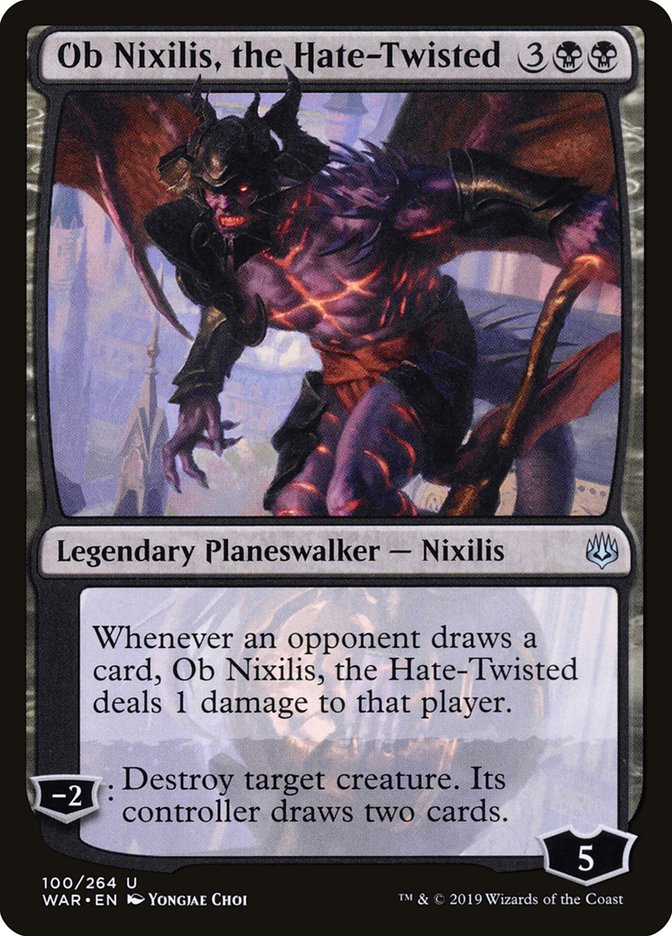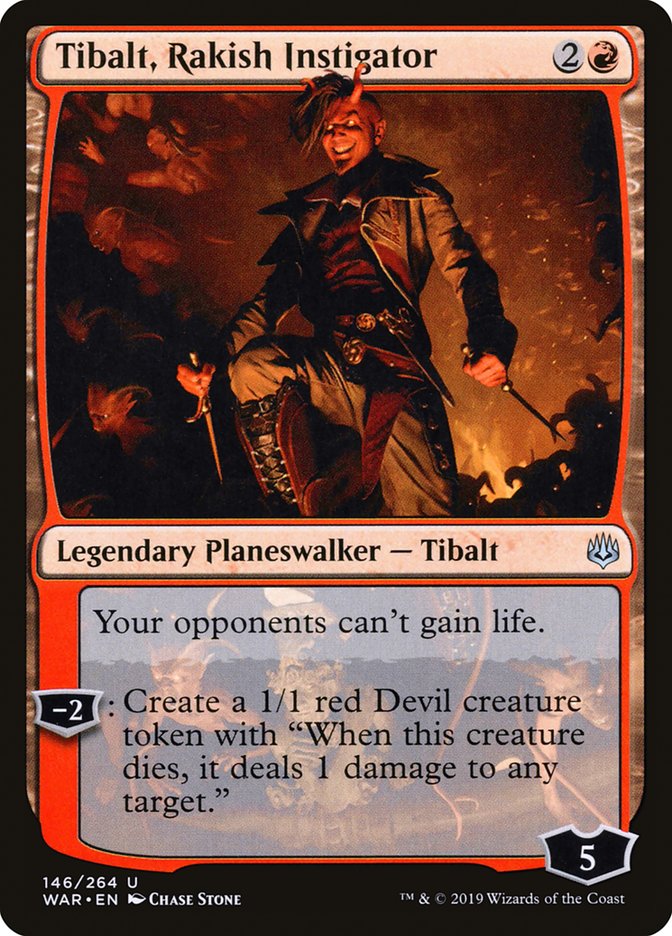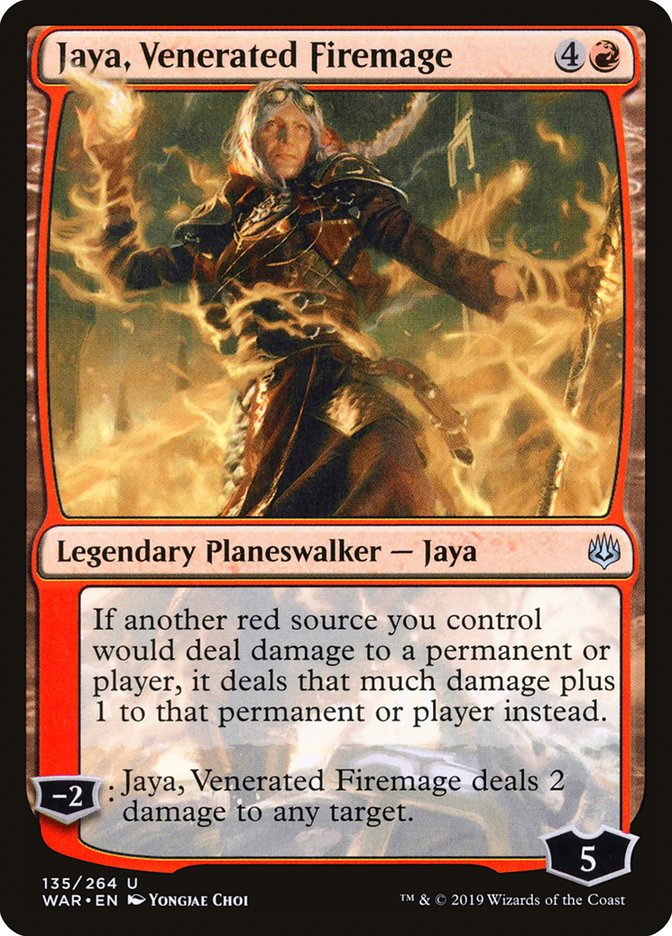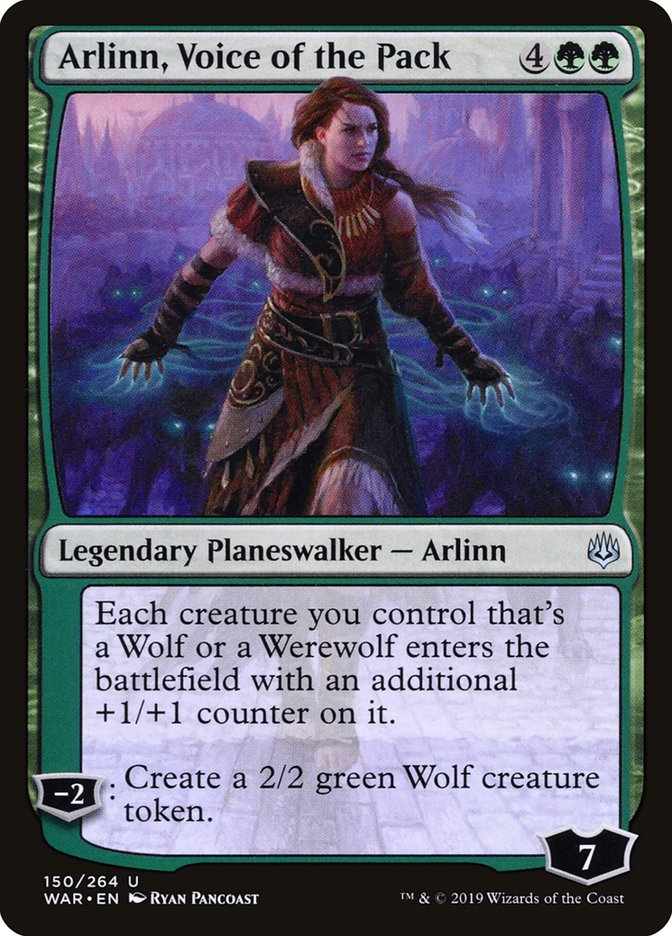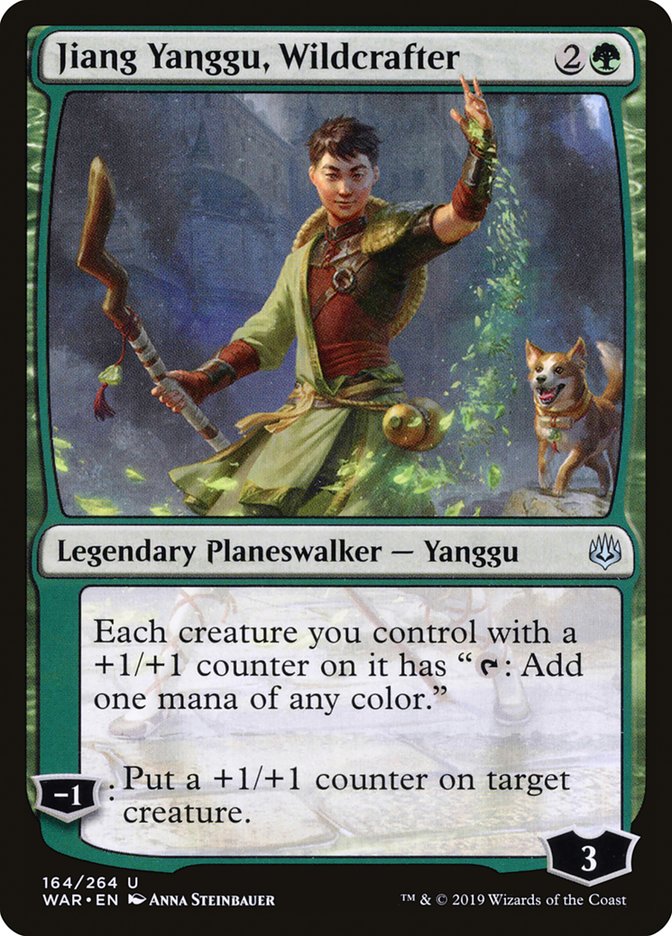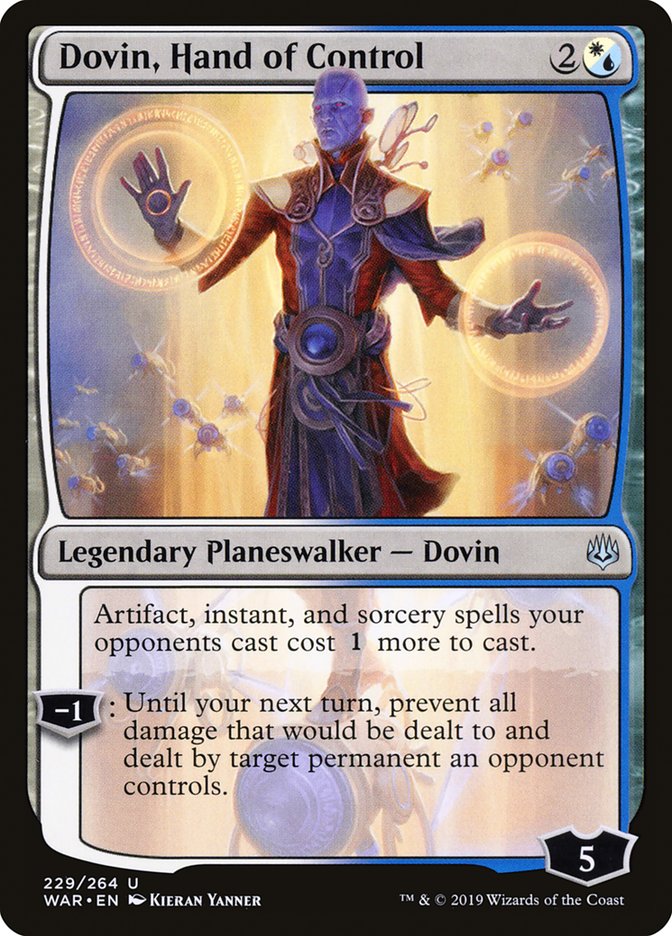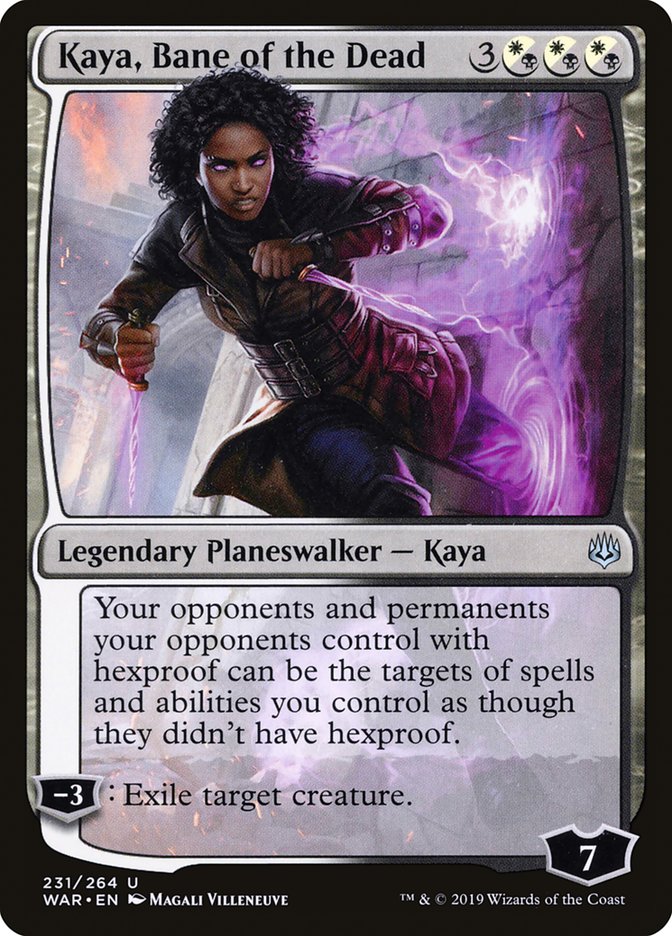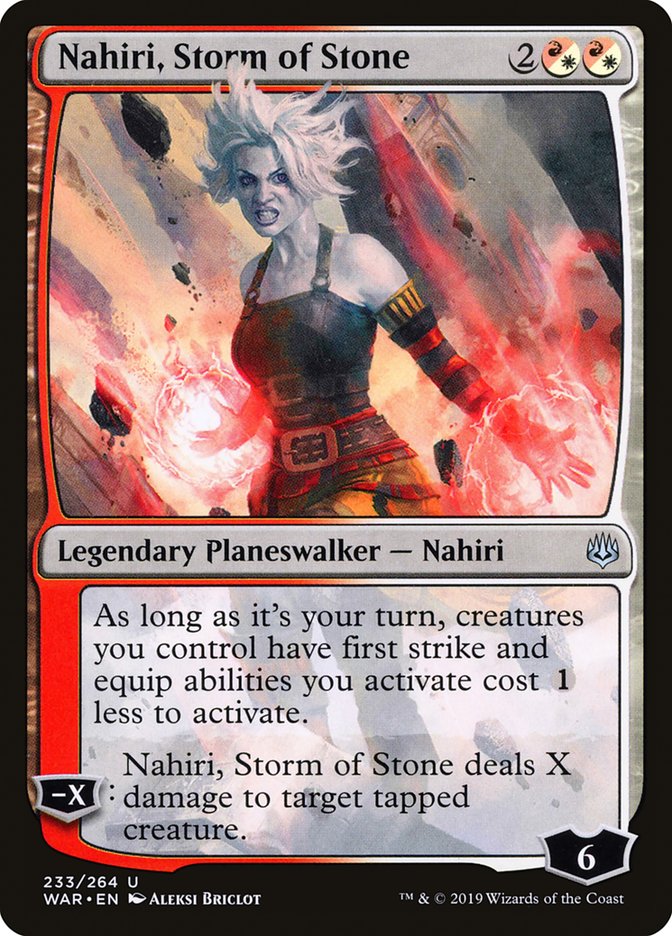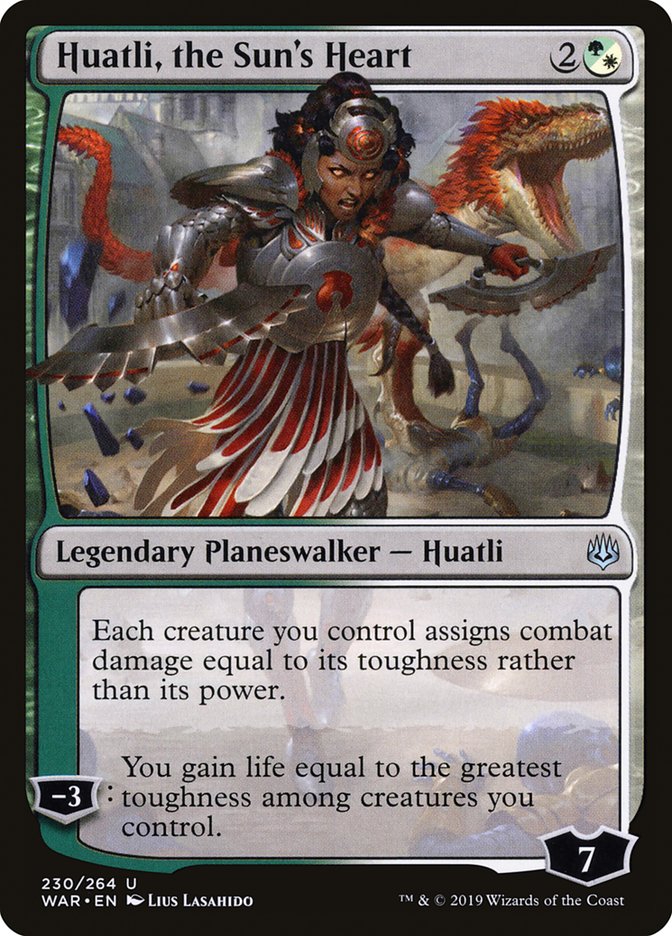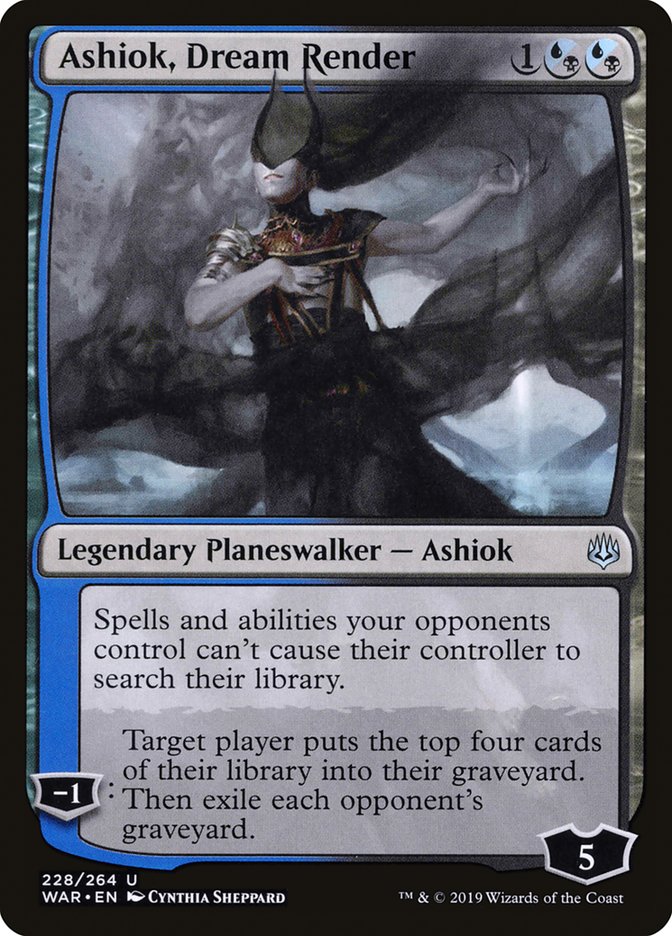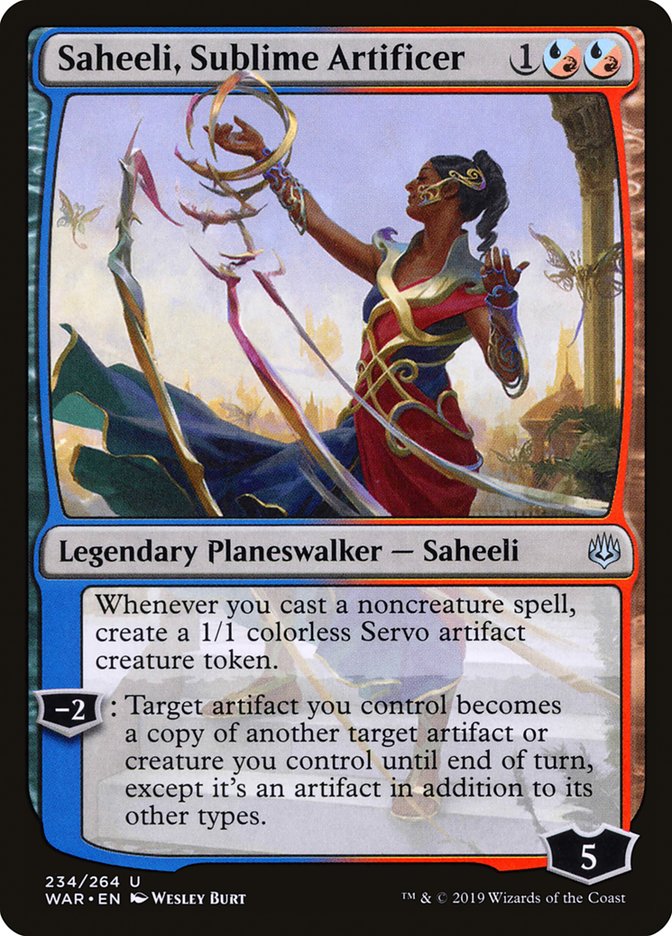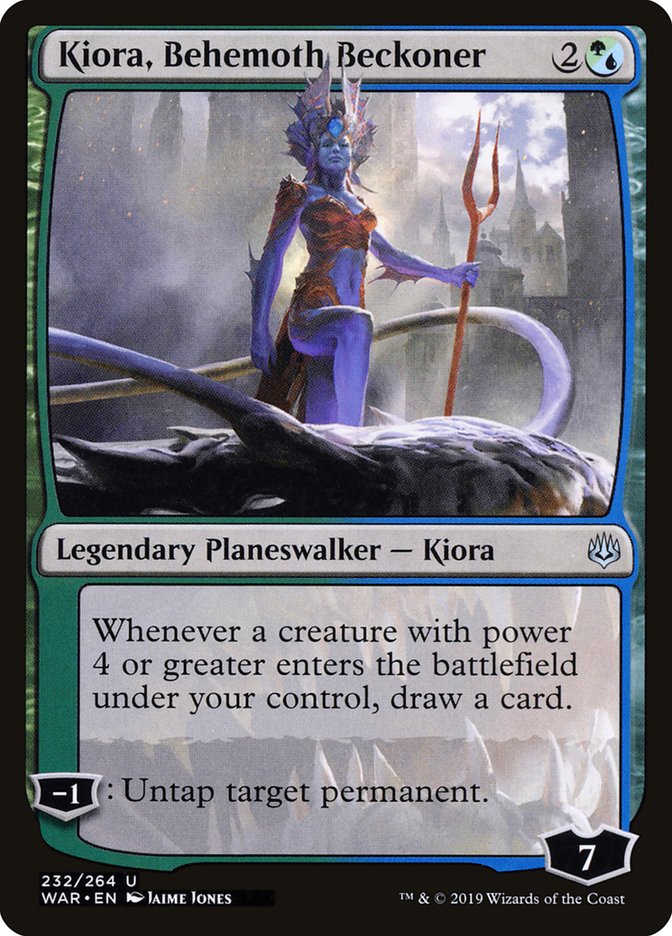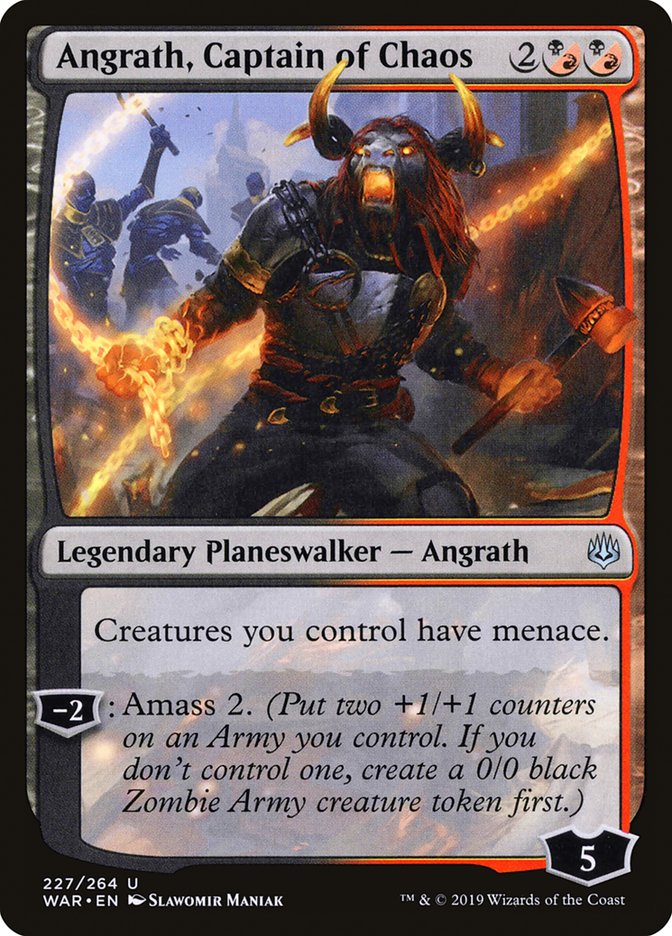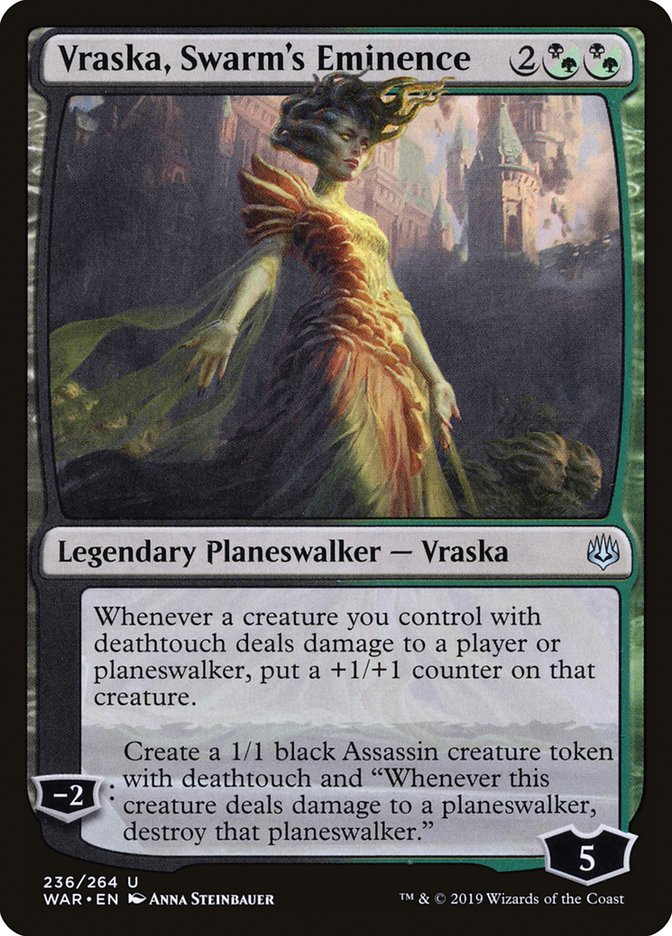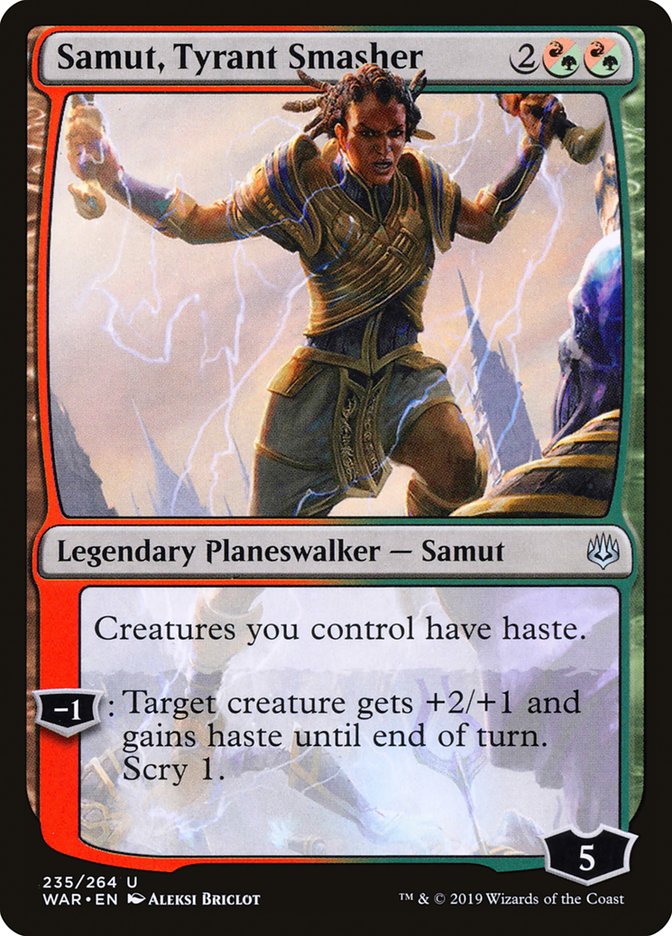Every single uncommon planeswalker in War of the Spark has been previewed for the world to see and they aren’t like anything we’ve seen before. Evaluating them without playing with them isn’t an easy task. But with the Mythic Championship and Grand Prix London only a week away, there won’t be time to play with every card in the set extensively prior to forming opinions and ratings.
The grades below are meant to translate to their value for Pack 1, Pick 1 of a draft. This bumps the value in the hybrid planeswalkers because of their cheap casting cost. The important thresholds to note while considering how I grade a card is that the best of the best commons in an average format are around a 7/10, and a grade of 4/10 or below means I actively do not want to include that card in my deck.
The Wanderer
Smite the Monstrous has never been a great Limited card. Four mana for conditional removal is a pretty big ask, especially when it’s not uncommon for Limited decks to lack large creatures. I don’t believe this will be the case in War of the Spark because both amass and proliferate turn small creatures into larger ones. In addition to killing big creatures, The Wanderer has a very polarizing static ability. It will be flavor text against some decks, but it also completely invalidates multiple premium commons like Jaya’s Greeting and Band Together.
The value of The Wanderer will fluctuate depending on how good the -2 ability is against most archetypes, but overall, I think this makes for a reasonable planeswalker.
Final Grade: 6/10
Teyo, the Shieldmage
I don’t understand the purpose of Teyo. An 0/3 has never been a good blocker in Limited and I don’t expect it to be any different in War of the Spark. My first inclination was that Teyo goes in a SuperFriends deck, because the tokens can protect other planeswalkers. However, with ‘walkers that can’t plus, chump blocking to protect them isn’t going to win you the game. And a card that does pretty much just that doesn’t seem worth it. Maybe I’m underestimating the speed bump Teyo provides, but I’m starting low on him. Teyo has cute synergy with Huatli, the Sun’s Heart, but that card doesn’t look great either.
Final Grade: 4/10
Kasmina, Enigmatic Mentor
Now we’re talking.
The abilities on Teyo, the Shieldmage and The Wanderer aren’t guaranteed to be relevant in any game of Limited, but Kasmina, Enigmatic Mentor has a monster of an ability. Just imagine Wanderer’s Strike rotting in your opponent’s hand, laughing as you sculpt your hand creating Wizard tokens. For four mana, you get four power, four toughness, card selection, and a powerful protection ability. It’s really hard to ask for more from a splashable uncommon. She won’t always stay around, but this is a planeswalker that’s hard to ignore and I expect to be a great first pick. Add in the fact that blue can proliferate with cards like Contentious Plan to create a third Wizard and I think she’s one of the best of the uncommon planeswalkers for Limited.
Final Grade: 8/10
Narset, Parter of Veils
The “noncreature, nonland” clause makes Narset, Parter of Veils require a specific deck to function. In a normal seventeen-land Limited deck, if you play ten hits, your deck only has thirteen creatures. Thirteen is a functional number, but in War of the Spark, a deck like that may struggle to pressure planeswalkers. Furthermore, even with ten noncreature, nonland cards in a deck, Narset will miss 30% of the time. If you want her to hit over 90% of the time, you can only put six creatures in your deck. So, while Narset can be solid in a very specific deck, that deck won’t be common and she’ll still have a fairly high fail-rate. Furthermore, her static ability isn’t relevant enough to balance this out.
Final Grade: 4/10
Davriel, Rogue Shadowmage
How good is Mind Rot? What about a Mind Rot that can only make an opponent discard the second card if they don’t have a good battlefield presence? Okay, but what about a Mind Rot that makes the opponent discard an extra card if you happen to have the stronger battlefield presence? Davriel, Rogue Shadowmage is kind of all the above, and he’s not an easy one to evaluate. He doesn’t affect the battlefield, and I mentioned in my last article, that’s a big downside in this set. But unlike most discard effects, Davriel is relevant in a topdeck war because he’s a threat when resources are exhausted.
This card is definitely better than Mind Rot, which I usually give about a 3/10. But how much better is it? I don’t think Davriel will be an early pick, but I’ll include him in my black decks.
Final Grade: 5/10
Ob Nixilis, the Hate-Twisted
Ob Nixilis, the Hate-Twisted is one of the hardest cards to evaluate in War of the Spark. Cards like Altar’s Reap are rarely great, but we’ve never seen one that can also hit opposing creatures. Ob Nixilis is this weird version of inefficient card draw, inefficient removal, and also an inefficient clock. But modal spells are powerful, and it’s very rare that all three of those functions are stapled onto the same card.
My gut tells me this card will be strong. The fact that my removal spell can just deal six or more damage to my opponent blows my mind. That’s not something I would advise unless it kills them, as it would grant them four cards, but it makes me think this card has a lot of applications.
Final Grade: 7.5/10
Tibalt, Rakish Instigator
Dance with Devils was a fine card in Shadows over Innistrad, but nothing special. Tibalt, Rakish Instigator similarly creates two Devil tokens. He trades the instant-speed ambush factor of Dance with Devils for a lower converted mana cost and for the potential of using the planeswalker body with either proliferate or cards like Heartfire.
The value of a Devil token differs from format to format. Footlight Fiend was a solid playable in Ravnica Allegiance, but that was largely due to the card Bladebrand. I’m expecting Tibalt to be about as good as a high-quality common, but not much better. Then again, the existence of Heartfire at common has the potential to make Tibalt better than I expect.
Final Grade: 6.5/10
Jaya, Venerated Firemage
At first glance, I thought Jaya, Venerated Firemage was fantastic. Then I reread the card. And saw the word “another” in the static ability.
Don’t be fooled, as Jaya deals two damage, not three. Her floor is a five-mana Shock that gains some life. Her ceiling, however, is killing two creatures and making your creatures into more potent threats until your opponent can sneak in a point of damage. The average case is going to be solid, yet unexciting. And I’m skeptical about a five-mana card that can’t win the head-to-head with a 3/3. But her ceiling is high enough that I think she’s as high a pick as the better commons.
Final Grade: 6.5/10
Arlinn, Voice of the Pack
The majority of uncommon planeswalkers in War of the Spark have a bunch of different play patterns, but very few provide the value that Arlinn, Voice of the Pack does. If a six-mana card creates three tokens in Limited, I’m expecting three 2/2s. Arlinn makes three 3/3s. She’s the best planeswalker at defending herself, and since green has proliferate, it’s not unreasonable to get a fourth activation. And there’s even a common Wolf (Arlinn’s Wolf) in the set for extra synergy!
Final Grade: 8/10
Jiang Yanggu, Wildcrafter
What is the value of a +1/+1 counter? If Jiang Yanggu, Wildcrafter consistently places multiple counters, generates a mana advantage, and is combined with proliferate, that’s a large advantage. But that’s also asking a lot.
On the play, if you hit your two-drop and your opponent misses theirs, Jiang Yanggu is an amazing Turn 3 play. But outside of that, casting him on Turn 3 is risky. I really want to give Jiang Yanggu a higher grade, especially because his dog Mowu is adorable, but I just can’t justify it. I expect him to fall short and die without generating enough value in too many scenarios.
Final Grade: 5/10
Dovin, Hand of Control
Against some decks, Dovin, Hand of Control’s static ability will be a relevant tax. To many, it will only be a subtle inconvenience. I’ve heard some discussion saying that Dovin’s impact on the battlefield just isn’t enough. I think that disregards the casting cost. A cheap planeswalker that’s playable in 70% of archetypes doesn’t need to be great to justify first-picking it. Dovin may not help press an aggressive advantage, but invalidating an opposing threat from attacking planeswalkers and your life total for multiple turns is nothing to scoff at.
Final Grade: 7/10
Kaya, Bane of the Dead
Six mana is a lot, but so is removing two creatures without asking anything else of you. Maybe Kaya, Bane of the Dead will function more like Lich’s Caress than a double removal spell, but that was also one of the best commons in Core Set 2019. Kaya is a tad more expensive, but she’s also playable in any white deck. With only two Orzhov hybrid mana symbols, she would be one of the best six-mana removal spells we’ve ever seen. But with the heavier requirements, I think she’ll be outshined by a good number of uncommons.
Final Grade: 7/10
Nahiri, Storm of Stone
Granting all your creatures first strike on your turn can enable some nasty attacks. Combat in War of the Spark will be about putting your opponents between a rock and a hard place by making them choose between chump blocking and losing their planeswalker. Nahiri, Storm of Stone not only facilitates attacks like this, she has a high starting loyalty, can kill multiple creatures, and is easy to cast. The only reason Nahiri doesn’t get an 8/10 is that she’s conditional removal. Vigilance creatures and properly approaching combat can mitigate her potency.
Final Grade: 7.5/10
Huatli, the Sun’s Heart
Good old Doran, the Siege Tower. We’ve been getting a lot of cards like this in recent Limited sets. High Alert was a respectable plan in Ravnica Allegiance, but it doesn’t look as supported here, and it’s a lot easier to kill a planeswalker than it is to kill an enchantment. Unfortunately, Huatli, the Sun’s Heart doesn’t have a reasonable loyalty ability either gaining life isn’t worth a card. Maybe there’ll be a deck for her, but in most decks you draft, I wouldn’t advise including Huatli.
Final Grade: 2/10
Ashiok, Dream Render
Ashiok, Dream Render is a confusing Limited card. Milling an opponent for twenty is game-winning, but milling an opponent for twelve is oftentimes irrelevant. Like with Huatli, the Sun’s Heart, most Limited decks won’t maximize Ashiok’s potential. Ashiok can be a win condition, but how often will that be the optimal plan for a draft? I’m all for experimentation and pushing archetypes to the limit, but killing planeswalkers needs to be a priority in this format, and a card that doesn’t affect the battlefield just doesn’t have room to fit.
Final Grade: 4/10
Saheeli, Sublime Artificer
In an Izzet Spells deck, Saheeli, Sublime Artificer will be one of your best cards, and Invade the City suggests that this will be a supported archetype. At three mana, an easy-to-cast enchantment that says “Whenever you cast a noncreature spell, create a 1/1 colorless Servo artifact creature token” would be a bomb-tier build-around first pick. However, Saheeli can be killed much more easily than an enchantment. If the Servos she creates are just chump blockers to protect her, that’s not good enough. She needs to be a real threat. I’ve chosen to give Saheeli two separate grades because I think she’s amazing in the right deck, but in most she’ll be lackluster.
Normal Grade: 4/10
Build-Around Grade: 8/10
Kiora, Behemoth Beckoner
Like Dovin, Kiora, Behemoth Beckoner doesn’t need to do all that much to be good. She’s cheap and extremely easy to cast. But unlike Dovin, what Kiora brings to the table isn’t as useful. Many Limited decks aren’t interested in a three-mana ramp spell, which is Kiora’s main purpose. And while Kiora can give creatures vigilance to protect other planeswalkers and draw cards when larger creatures hit the battlefield, it’s unclear how consistently those applications will come up in a way that presses a real advantage. Kiora is playable, but unexciting.
Final Grade: 5/10
Angrath, Captain of Chaos
Unopposed, Angrath, Captain of Chaos creates a 4/4 menace creature and grants all your creatures menace until your opponent can justify attacking him. That’s above rate for a four-mana card that’s difficult to cast, let alone a hybrid one!
The real question will be how often your opponent can profitably pressure Angrath without dying. Granting menace to your team is an unassuming ability on a planeswalker. If your opponent wants to pressure Angrath, it’ll be difficult to do without taking a big hit on the backswing. And since Angrath will often facilitate an attack the turn he comes down, your opponent may not have that luxury.
Final Grade: 8/10
Vraska, Swarm’s Eminence
In a format where creatures need to get in the red zone and pressure planeswalkers, a deathtouch critter is more likely to be relevant. Chipping in with only the cheap and evasive creatures won’t always cut it in this format, and so two 1/1 deathtouch creatures will trade profitably in combat. Four mana seems like a solid rate, and on an empty battlefield, the Assassins grow.
Lastly, the fact that Vraska makes creatures that insta-kill planeswalkers is enticing. I’m not sure how valuable they are as attackers, as they trade with everything, but I can tell you that leaving back only one blocker to protect a planeswalker from an Assassin is nerve-racking. I expect she’s better than most commons, and I wouldn’t be surprised if she’s a high-tier uncommon (although that would exceed my expectations).
Final Grade: 6.5/10
Samut, Tyrant Smasher
Rhythm of the Wild was three mana, couldn’t be interacted with easily, and could augment creatures when haste wasn’t good enough. Samut, Tyrant Smasher is not even close to as good as Rhythm of the Wild, and it’s not like Rhythm was even a fantastic card – it was just a good card. Four mana is too much for a card that grants haste, doesn’t self-protect, and requires you to untap to press an advantage. And you can only press said advantage when you have a creature that can attack to follow it up. There will be games that Samut wins, but I don’t expect there to be many.
Final Grade: 3/10


